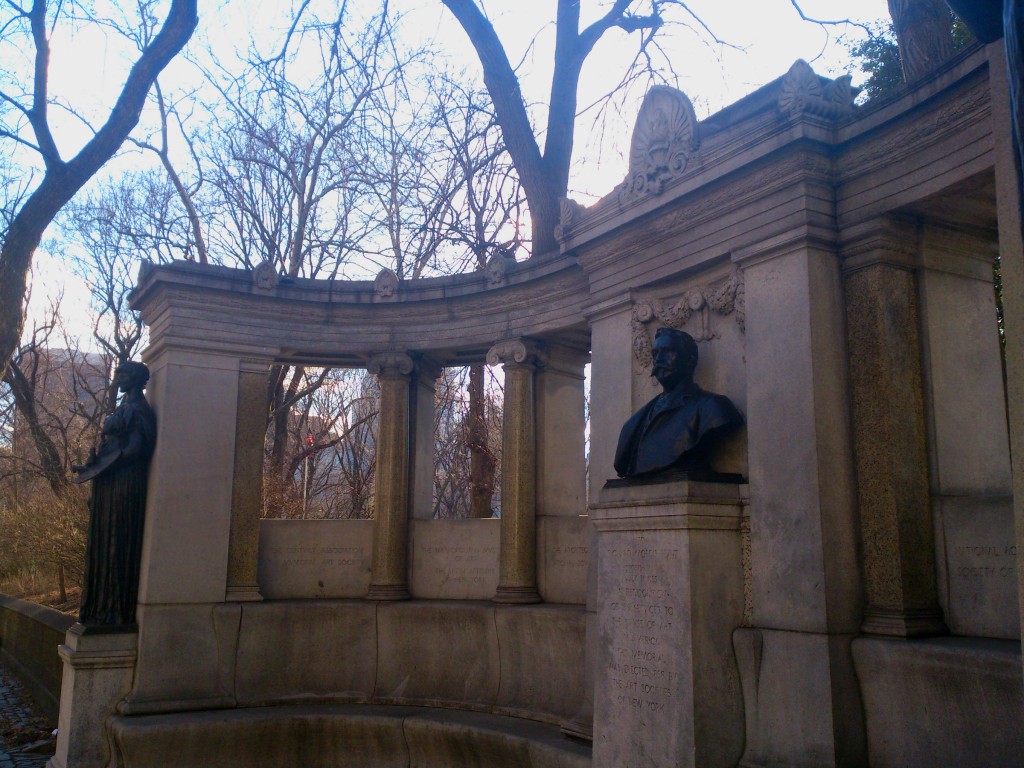The Richard Morris Hunt Memorial

Standing across the street from the Frick Collection, the 1898 Richard Morris Hunt Memorial pays tribute to the leading New York City architect of its day, whose numerous mansion designs for the Vanderbilt Family and others once lined Fifth Avenue. Inventor of the Chateau Revival style, also known satirically as “Vanderbilt Gothic”, Hunt also was an early proponent of the skyscraper through his designs for the New York Tribune Building. Unfortunately none of Hunt’s residential designs remain on Fifth Avenue, although several do elsewhere in the country, including the Biltmore Estate in Asheville, NC, the largest house in the United States.
Hunt was the first American to study at the prestigious Ecole des Beaux-Arts in Paris, opening the way for numerous others and providing the basis for the widespread popularity of French architectural models in the United States throughout the second half of the 19th century. He was also the founder of both the American Institute of Architects and New York’s Municipal Arts Society. His most important surviving New York City works are the main façade and Great Hall of the Metropolitan Museum of Art and the base of the Statue of Liberty.
The memorial was designed by architect Bruce Price, himself a major talent of the 19th century and the architect of many of the first houses in Tuxedo Park, the country’s first gated community. The sculptor was the acclaimed Daniel Chester French, best known for the seated figure of Lincoln at the Lincoln Memorial in Washington, DC.
The memorial was erected in across the street from Hunt’s celebrated Lennox Library of 1870 – which was later replaced in 1912 by the Frick Mansion, thereby robbing the monument’s location of its symbolism. It is still an impressive reminder of New York’s first great architect.